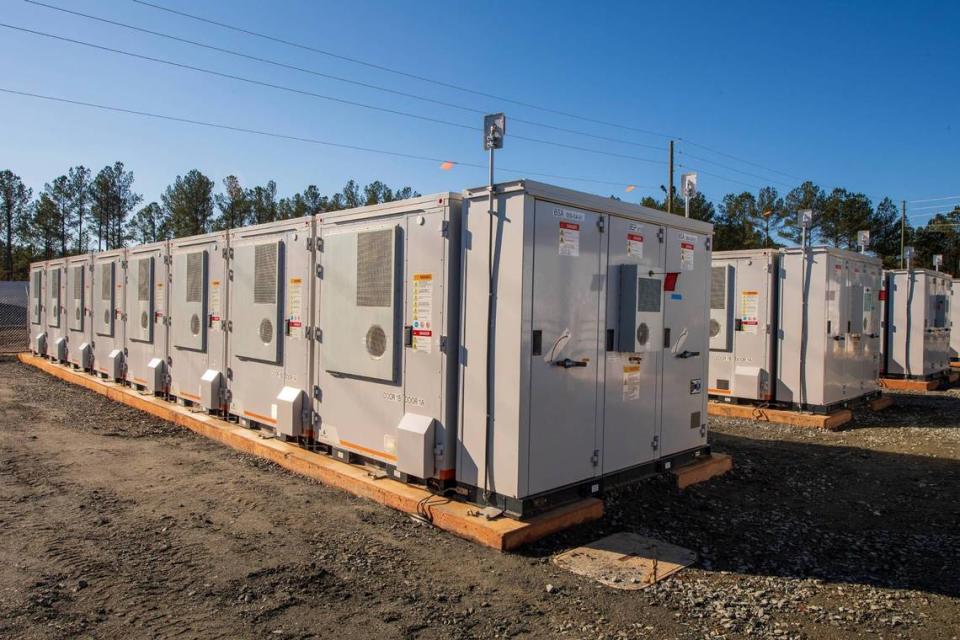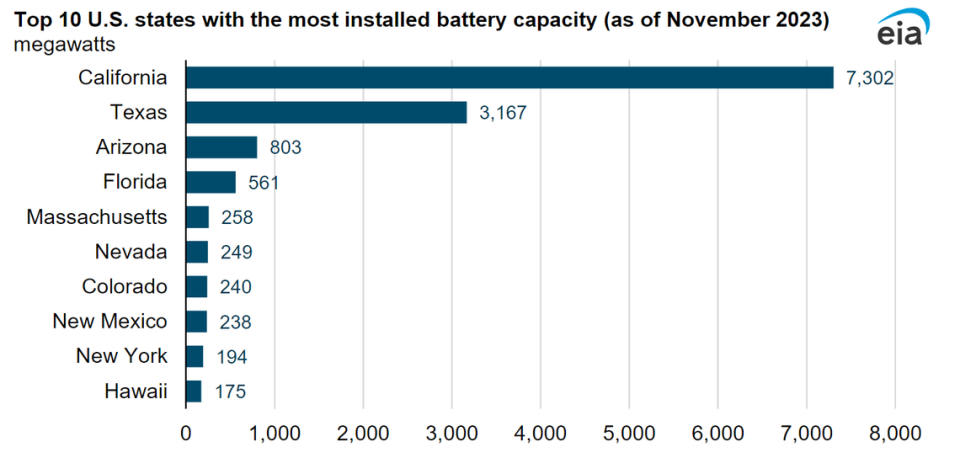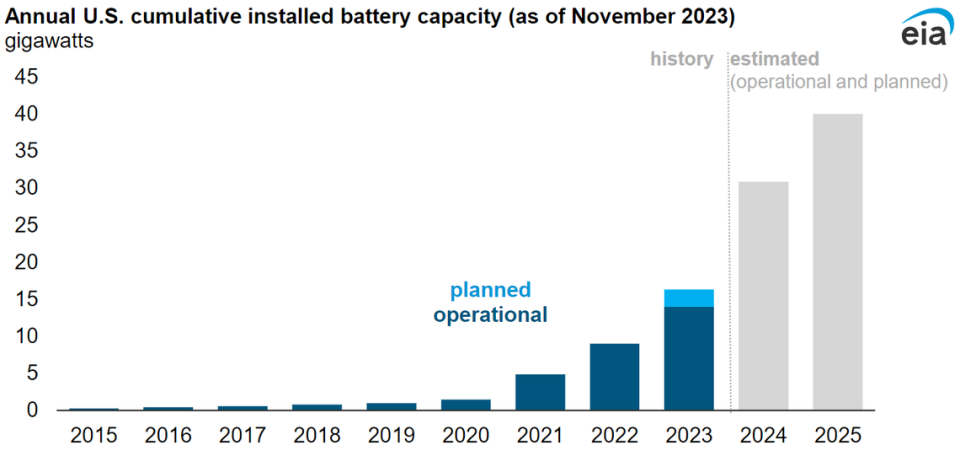GA installs first battery storage system in Talbot County. How it works & why it’s important
Georgia Power will soon flip a switch and turn on its latest clean energy construction project: battery storage.
When millions of Georgians begin their day by turning on lights, the coffee machine, take a shower, dry their hair, and run the dishwasher, the energy demand in the state spikes. Clean energy sources like solar may not be available to produce electricity during the peak demand when the sun isn’t yet shining–or if there is a rain storm, for example.
When that is the case, Georgia Power, the major energy supplier in Georgia, has to rely on carbon-polluting sources like coal power or natural gas to meet the demand of 2.7 million Georgians every day.
To rid the use of fossil fuels and meet its decarbonizing energy goals, Georgia Power is adding Battery Energy Storage Systems (BESS) to its clean energy portfolio. BESS creates more flexibility with energy usage from demand fluctuations and adds more capacity to the energy system.
“As Georgia Power looks at our energy transmission system across the state, we want areas that have the capacity to inject more energy to support what the grid naturally needs,” Aaron Mitchell vice president of planning and pricing said.
The brand new and first ever, 65 MW (megawatt) BESS, named Mossy Branch Energy Facility, sits on 2.5 acres of rural land in Talbot County, 40 minutes north of Columbus.

Near the 400-person town, Shiloh, Georgia, Mossy Branch is nestled between existing transmission lines.
It will have the capacity to both accept the charge from the grid, and discharge energy from the grid, making it an ideal place. It can charge any type of existing grid energy source, not just solar. The Mossy Branch Facility can store “whatever makes up the grid system at the time,” Aaron said.
At first glance, it might not appear like an energy facility.
The 6’x6’ gray steel boxes are symmetrically distributed on the land, surrounded by a canopy of trees.
Fifty people were employed during the construction and design of this project. Wärtsilä, a Finnish-based company provided the engineering, procurement, and construction.
It’s set to come online and be operational sometime between April and June this year. There will be no changes to electricity rates for Georgia Power customers.
The first of many
In 2019, the Public Service Commission (PSC) of Georgia approved 80 MW of BESS for the Integrated Resource Plan (IRP)--the three-year long-term plan that Georgia Power must provide to the PSC. The remaining 15 MW from the approved 80 MW is currently being developed near U.S. Army Base Fort Stewart, in Southeast Georgia. But, this BESS will be charged not by the grid, but by existing solar.
A 30 MW solar plant will directly charge the 15 MW BESS facility at Fort Stewart. Alternatively, it can be grid-charged the same way Mossy Branch is charged. This type of BESS is more flexible. That project is still in development awaiting construction.
Georgia Power proposed another 830 MW of BESS, and received approval during the 2022 IRP.
Georgia Power will install 265 MW at McGrau Ford substation in Cherokee County, with 560 MW still available and being determined for deployment. That puts Georgia Power on track to own and operate a total of 915 MW of BESS for Georgia over the next several years.
As far as the plans for incoming BESS construction projects, the company wants to use existing solar power and transmission lines.
“We’re looking at existing solar facilities where transmission infrastructure is already constructed to be cost-efficient with installation facilities.”
Right now, California and Texas dominate the BESS landscape in the U.S. As of November 2023, California has 7,302 MW of BESS capacity and Texas has 3,167, according to the U.S. Energy Information Administration (EIA).

Prior to the Mossy Branch Project, Georgia Power did a small-scale pilot, 2MW project in Northwest Georgia to experiment with battery storage. However, most of the learning has come from the Mossy Branch Facility.
Mitchell called it, “significant before it even comes online.”
“We have learned a significant amount during development and construction that will aid us in the next 1000 MW of BESS,” he said. “We will be able to do the next projects more efficiently, faster, and better integrated.”
The latest data from the EIA suggests storage capacity has been growing since 2021 and could nearly double by the end of 2024 in the U.S.

Good news for climate and grid resilience
“Mossy Branch will improve grid reliability and flexibility without any local air emissions,” Simon Mahan, executive director of Southern Renewable Energy Association said, adding that 65 MW is equal to 260 megawatt hours of energy storage.
“A typical home may use about 30 kilowatt hours in a day, meaning Mossy Branch would provide enough energy for over 8,600 homes daily or power over 2,600 electric vehicles,” Mahan said. “It’s about the size of a small to mid-sized natural gas power plant.”
American Clean Power (ACP), the nonprofit group dedicated to bringing renewable energy to the energy system called BESS them critical to clean and efficient infrastructure.
“Energy storage systems can support entire building or larger electrical grids during extreme weather events,” according to ACP’s energy storage fact sheet.
“Batteries react faster to emergencies on the grid than any other type of power plant,” Mahan said. “Coal and nuclear plants can take hours to react, natural gas power plants can react sub-hourly, and batteries can react on a sub-minute basis.”
As far as the cost of the system, Georgia Power would not release the amount Mossy Branch cost citing trade secrets.

